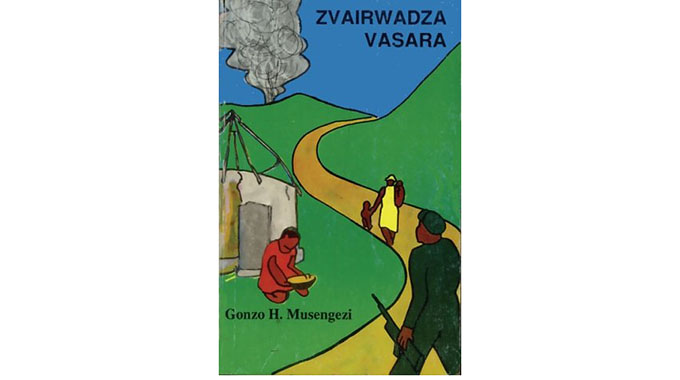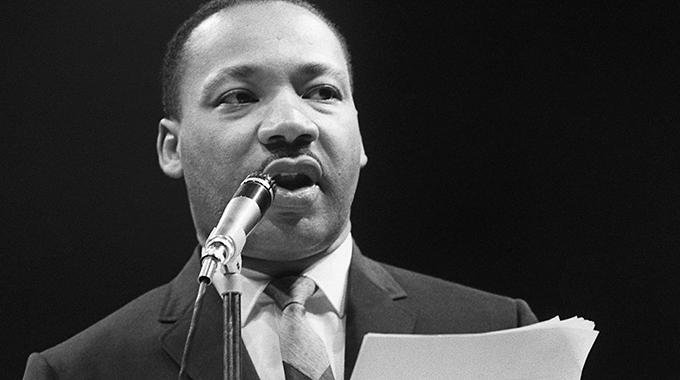The emotional artiste’s feeling as his law
Elliot Ziwira @The Book Store
There is something about the Romantic theory that is both inspirational and boggling, when it comes to the understanding of the artiste as an individual, and it is this that this instalment will seek to unravel.
Romanticism as a theory of literature debunks the aesthetic rigidity of classicism, which leans on elegance and cadence in determining the fate of man. Romanticism originated in the 18th century and reached its peak between 1800 and 1850. The primacy of the theory is the demystification of artificiality to put emphasis on individual innovativeness and inspiration, because “the artist’s feeling is his law”, (Casper David Friedrich).
Hence, emotive subjectivity becomes paramount through “the spontaneous overflow of powerful feelings”, which the poet then “reflects in tranquillity”, as William Wordsworth intimates. Romanticism articulates itself through the adept use of strong emotive passions that fire the imagination (Muchemwa, 2001), through heightened use of dialogue and symbolic elements to intensify the purveyed consciousness of characters.
As will be explored through close reference to the works of William Wordsworth, William Blake and the Bronte sisters, the theory, though strongly rooted in the essence of creativity as an elixir to humanity’s suffering, is as complex as it is problematic and two-pronged.
As a response to both the Industrial Revolution and the French Revolution, Romanticism seeks to give the individual a vent of escape through imagination, emotive catharsis and appreciation of the beauty of nature.
To the Romanticists, emotions, creativity and nature are central to human relations, because human values should not be reduced to commercial ethics. Drawing inspiration from Christianity, pertinently Catholicism; Romanticism demarcates the individual’s space from the societal one.
Because man cannot exist in the absence of his environment, as his struggles are ever juxtaposed to natural elements, he has to understand that without nature he is doomed. Romanticism, therefore, sentimentally places nature at the centre of humanity’s emotive and creative aspirations, as the poet John Keats intimates: “If poetry does not come to me as leaves on a tree, then it should not come.” William Wordsworth concurs that poetry is a “powerful overflow of emotions”. Both Keats and Wordsworth embrace nature and emotions as being vital cogs in the individual’s struggle to locate himself/herself in the communal and national discourses.
It is possible for the individual to escape from the claustrophobic nature of societal expectations through the imaginative vent, Romanticists reason. Romanticist poets like Wordsworth, Samuel Taylor Coleridge, Oscar Wilde and William Blake espouse tenets of Romanticism, which locate the individual at the core of the social platform that gives a human face to the fight against the destruction of nature because of industrialisation and its attendant capitalistic and capitalistic machinations.
The poets, who are also referred to as nature poets, use symbolic elements drawn from nature to capture the nostalgia of the golden past, the infectious remnants of humanity that pervade the countryside, as human relations seem to be sacrificed at the altar of commercialism.
Inspired by the uncorrupted beauty of nature, Wordsworth lambasts industrialisation, which scuttles individual aspirations, puts a barrier on human relations, as everything is seen through commercial lenses; and child labour and exploitation of the feeble becomes rampant. His poetry follows episodes of experiences, which are stitched together to purvey how nature’s armoury can, indeed, be used to reflect on man’s foibles as he struggles against both himself and his environment.
In the poem “The Solitary Reaper”, the poet is contemptuous of child labour as he questions humanity’s callousness and deafness to the plight of children, as is illustrated in the following lines: “Behold her, single in the field,/Yon solitary Highway Lass!/Reaping and singing by herself,/Stop her or gently pass!/Alone she cuts and binds the grain;/O listen! For the vale profound/Is overflowing with the sound.”
Using nature’s armoury, the poet, like William Blake in “In the Chimney Sweeper”, takes a swipe at the way the “Highland Lass” is forced to labour alone in the field with no one taking heed of her “melancholy strain”, even though the entire “vale” is “ overflowing with the sound”, of her burdened plea.
In “Love Lies Bleeding”, as is the case in his Lucy Gray poems, Wordsworth makes effective use of imagery to portray the burdensome nature of love, for to love is to be prepared to be hurt, because love is prone to both the vagaries of nature and the voyeur of man. The poet laments:
You call it, “Love lies bleeding”, so you may
Though the red Flower, not prostrate, only drops,
As we have seen it here from day to day
From month to month, like passing not away
A flower how rich in sadness!
In his quest to make man realise how much pain he brings both to the natural world and to himself, Wordsworth personifies nature and gives it a chance to cry out for help, only if man is willing to give it an ear, because his existence is intertwined with nature. This rationale also obtains in the poems “I Wondered Lonely as a Cloud”, “To a Butterfly”, “The Sparrow’s Nest” and “Lucy Gray/Solitude”.
Blake, like Wordsworth, and Coleridge in “Kbla Khan” (1797), champions freedom for the individual, through seeking agency in questioning some aspects of religion, or spirituality. In the poem “The Chimney Sweeper” Blake depicts Christianity as oppressive to the individual by downplaying, or rather aggravating his/her suffering. The poem conforms to aspects of Romanticism; child labour and the impact of the Industrial Revolution on the natural world. The images of soot or smoke pervading the poem paint a gloomy picture of childhood in a world that thinks, sees and hears in commercial terms.
The persona mourns: “When my mother died I was very young,/And my father told me while yet my tongue/Could scarcely cry ‘weep! weep! weep! weep!’/So your chimneys I sweep and in soot I sleep.”
The persona draws one into the world of “thousands of sweepers, Dick, Joe/Ned and Jack”, who are “locked up in coffins of black”. In all this the child labourers dream of an “Angel”, who “told Tom, if he’d be a good boy,/He’d have God for his father & never want joy.”
Blake subtly lashes out at the make- believe world of religious fanaticism that “make up a heaven out of our misery”.
In English fiction Emily Bronte, Charlotte Bronte and D. H. Lawrence work within the confines of the English tradition. The books that easily come to mind are “Wuthering Heights” (1847), by Charlotte Bronte, “Jane Eyre” (1847) and D. H. Lawrence’s “Sons and Lovers” (1913). Following tenets of Romanticism, the Bronte sisters’ characters have to individually challenge societal expectations in an effort to poke at the rigidity of morality as bedrock of the institution of marriage, and the nature of love.
There are certain parameters that the individual has to grapple with, because his or her happiness cannot be possible without having to reflect his/her biography on the communal and national discourses. The individual is conscious of the fact that living in a vacuum is both fallacious and baneful, but he seeks to place himself at the centre of everything. He/she becomes the focal point through subjectivity and inspiration.
The Bronte sisters draw inspiration from Gothic elements to reward individual effort. Death becomes the beginning and not the end, for life is born of death, and death creates possibilities for the living. Thus, vengeance seems to be depicted, not as a vice, but an outlet to correct the imbalances of life itself.
In “Wuthering Heights” Heathcliff is imbued with vengeance as he seeks to take control of Wuthering Heights and Thrushcross Grange, and destroy everything close to Edgar Linton’s heart. His gripe is that Edgar steals Catherine, his sweetheart’s heart, and that Hindley is determined to elbow him out of Wuthering Heights. Although he is aware that he is not legally or morally entitled to the Heights, he is determined to take control; and death atones him by claiming both Mr Earnshaw and Edgar, thus, giving him control of Wuthering Heights and Thrushcross Grange, albeit after a 17-year wait.
As is the case in “Jane Eyre”, gothic elements haunt the living as death is sought as a leveller and quotidian of dreams. Even though Catherine marries Edgar, who she appears to love, her ghost haunts Heathcliff, who wishes to unite with her even in death. Subsequently, the two lovers are united in death; creating an opportunity for Cathy and Henlon (Hindley’s son) to be united in marriage, hence, upsetting Heathcliff’s desire to have his daughter married to Edgar Linton’s son.
In “Jane Eyre” the heroine, Jane also rides on Gothic elements as death gifts her with opportunities. Because spirituality is central to Romanticism, the protagonist’s destiny is shaped by dreams, which create a base for her to get a place at Lowood School; and also implore her to return to Thornfield when Mr Rochester is in trouble. It is at Lowood that her spirituality is given form through her friend Helen Burns. It is at this school that she also learns aspects of etiquette, which opens doors to Thornfield Hall to her.
Bronte explores the limitless horizons that open up to the individual regardless of circumstances of birth, or current situation. The essence of human relations and the institution of marriage are adeptly highlighted through Jane’s ties with the Reeds, St John as well as her affectionate relationship with Miss Temple and Helen Burns.
Through downplaying commercial gain, Bronte rewards the now desperate Rochester with Jane’s undying love; as love conquers all and death becomes, not an elixir as purveyed through surrealistic and nihilistic aspects of Modernism, but a platter on which individual freedom, happiness and opportunities are delivered.
However, although Romanticism hinges on emotive and creative innovativeness, which inspires the individual and seeks to make him/her live in harmony with nature, as has been explored, it has its flipside. Its major folly is that it is reactionary, for it responds to socio-political issues in a rather puritanical, perfectionist and idealistic way. Thus, the proponents of the theory apologetically gloss over the real issues that expose the feeble and vulnerable to power and suffering, (Abrahams, 1971).
The make-believe world, or world of fantasy depicted in “Wuthering Heights” and “Jane Eyre” does not inspire objectivity, as the individual lives happily ever after, notwithstanding the reality of the glaring permanence of the reasons for suffering.
The emphasis on escapism through symbolic elements, spirituality and death makes Romanticism complex and contradictory.
Though seeking individual liberty and heroism in the questioning of morality may be inspirational, Romanticism fosters inward looking or navel gazing, because pressing social or political issues are ignored (Abrahams, 1972), and collective efforts for total freedom are thwarted. The theory falls short on the social realism propounded by Karl Marx, as nature becomes a scapegoat and agency to change the status quo that exists between the rich and the poor remains conspicuous in its absence.
Romanticism seeks “creation from nothingness” and gives the individual a vent to articulate himself/herself “free from artificiality”, which is inspirational, therapeutic and cathartic, as it reflects on the beauty of nature. However, its idealistic nature leaves a lot to be desired in the collective struggle against oppression.








Comments